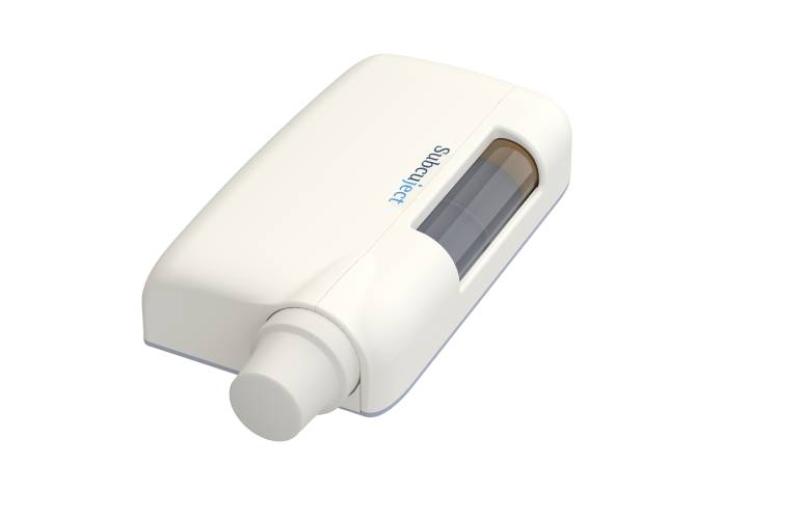The healthcare and pharmaceutical industries are witnessing a revolutionary change with the introduction of wearable injector devices. These cutting-edge devices are designed to provide a more convenient, efficient, and less invasive method of drug delivery, particularly for chronic conditions requiring regular injections. Wearable injectors combine automation, portability, and patient-centric design to improve adherence, reduce injection-related anxiety, and enhance therapeutic outcomes. This article explores the scope, technological advances, market trends, and commercial potential of wearable injectors to offer a comprehensive understanding for stakeholders.
Innovative Technology Driving the Growth of Wearable Injectors
Wearable Injectors leverage advanced mechanical and electronic systems to administer drugs subcutaneously or intramuscularly over controlled durations. Utilizing pre-filled drug cartridges, sensors, and programmable software, these devices facilitate consistent, accurate dosing without the need for direct patient involvement during each dose. The integration of Bluetooth connectivity and mobile applications allows real-time monitoring, dose tracking, and personalized treatment adjustments that align with patient-specific requirements.
The technology validations include safety features such as automated needle insertion and retraction, dosage error prevention through software algorithms, and skin-friendly adhesives designed for prolonged wear. These factors contribute to enhanced patient compliance while minimizing discomfort and injection-site reactions, common concerns with traditional syringe-based injections.
Market Trends Indicating Increasing Adoption of Wearable Injectors
The demand for wearable injectors has surged globally due to growing awareness about self-administration, chronic disease prevalence, and the desire to reduce hospital visits. Increasing cases of diabetes, rheumatoid arthritis, multiple sclerosis, and oncology patients are driving the need for devices that support at-home administration of biologics and specialty drugs.
Key market trends reveal strategic partnerships among pharmaceutical and medical device companies focused on expanding product pipelines and improving device functionalities. Emerging wearable injector models now support larger volume payloads, multiple dose regimens, and integration with digital health ecosystems. These innovations not only elevate patient convenience but also streamline drug delivery workflows, enabling healthcare providers to offer remote monitoring and enhanced patient management solutions.
Commercial Opportunities and Investment Potential in Wearable Injector Market
The commercial landscape for wearable injectors is expanding rapidly, with significant investment flowing into research and development, strategic collaborations, and regulatory approvals. These devices present lucrative opportunities for pharmaceutical companies aiming to differentiate their biologic therapies by offering superior drug administration modes.
From a business standpoint, wearable injectors help reduce overall treatment costs by lowering hospitalization rates, cutting down on nursing care interventions, and enhancing drug adherence. The devices offer a compelling value proposition for healthcare payers, providers, and patients, driving demand growth across developed and emerging economies alike.
Pharma companies are increasingly incorporating wearable injector solutions into drug-device combination products, facilitating faster market access and enabling premium pricing models. Early movers benefit from intellectual property protection and first-to-market advantages, fostering competitive differentiation and long-term revenue streams.
Critical Navigational Insights to Access Comprehensive Wearable Injector Market Reports
For in-depth data on industry dynamics, competitive landscape, technological benchmarks, and regulatory frameworks shaping the wearable injector segment, stakeholders seek reliable research sources. Market reports focusing on drug delivery systems predominantly emphasize wearable injectors due to their disruptive potential in healthcare delivery.
These detailed industry analyses cover market segmentation by product types, application areas, end-users, and geographic regions, supported by quantitative metrics like revenue forecasts, CAGR, and emerging trends. Strategic insights also highlight key player profiles, recent collaborations, and pipeline innovations driving future growth.
Accessing such market intelligence facilitates informed decision-making for investors, developers, and marketing strategists aiming to capitalize on wearable injector opportunities. Comprehensive studies also include risk assessments, market entry strategies, and technology adoption frameworks necessary for successful commercialization.
Enhancing Patient Experience and Healthcare Outcomes with Wearable Injectors
Wearable injectors significantly improve the patient experience by offering discreet, pain-reduced, and user-friendly drug administration methods. Patients benefit from flexibility in dosing schedules without compromising lifestyle activities. The devices empower patients by minimizing dependency on caregivers and clinical environments.
Furthermore, improved adherence driven by automated injections and digital reminders fosters better therapeutic outcomes and reduces complications associated with missed or incorrect doses. Real-time feedback mechanisms help clinicians monitor treatment progress remotely, supporting timely interventions and personalized care adjustments.
Such capabilities align well with the global shift toward patient-centric healthcare models focusing on convenience, accuracy, and engagement. This synergy ultimately supports cost-effective disease management and enhances quality of life for affected populations.
Future Outlook: Wearable Injector Innovations Leading Healthcare Transformation
Looking forward, the wearable injector market is poised to witness continuous innovation with integration of artificial intelligence, enhanced sensor technologies, and biodegradable materials. Future devices are expected to facilitate multi-drug delivery, adaptive dose modulation, and interoperability with broader healthcare IT infrastructure.
Collaborations across biotech firms, device manufacturers, and digital health companies will catalyze the development of next-generation systems capable of addressing complex therapeutic needs in real time. Regulatory pathways are evolving to support these advancements while ensuring patient safety and device efficacy.
As precision medicine and personalized therapies grow, wearable injectors will play an essential role in delivering biologics and gene therapies, representing a paradigm shift from traditional delivery mechanisms to smart, connected health solutions.
Get this Report in Japanese Language: ウェアラブルインジェクター市場
Get this Report in Korean Language: 웨어러블 인젝터 시장
About Author:
Money Singh is a seasoned content writer with over four years of experience in the market research sector. Her expertise spans various industries, including food and beverages, biotechnology, chemical and materials, defense and aerospace, consumer goods, etc. (https://www.linkedin.com/in/money-singh-590844163)
